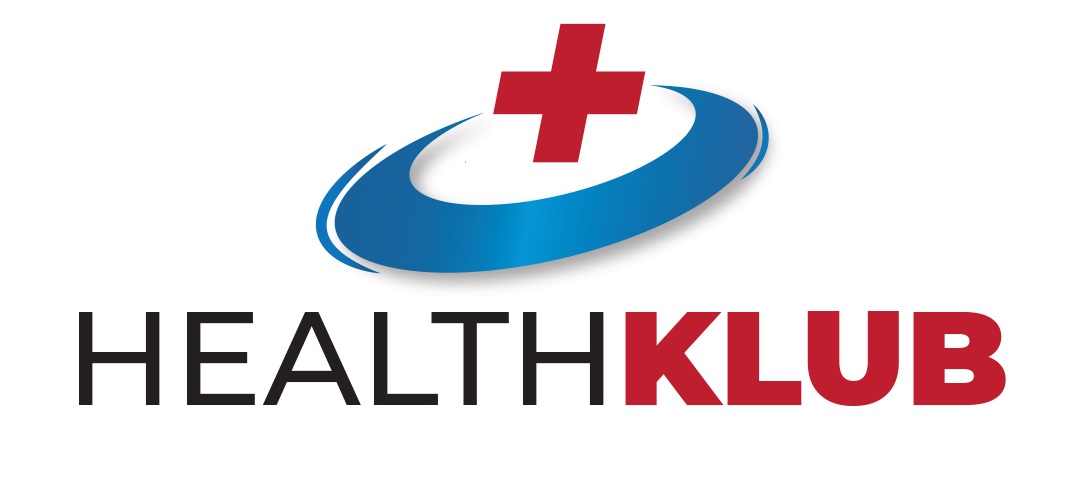Introduction
Nail biting, also known as onychophagia, is a common habit in both children and adults. In children, this behavior can be a response to various emotional and psychological factors, and it often goes unnoticed until it becomes a habit that requires attention. Understanding the signs of nail biting in children is essential for parents and caregivers to address this habit early on. In this blog post, we’ll explore seven distinctive signs of nail biting in children, helping you identify and address this behavior effectively.
1. Damaged or Shortened Nails
Nail biting, or onychophagia, often leaves its mark on a child’s fingernails. This habit can manifest in several ways, but one of the most apparent and immediate signs is the damage and shortening of the child’s nails. Let’s delve deeper into this distinctive sign of nail biting in children to understand the implications and the extent of this issue.
Uneven and Jagged Nails:
When a child frequently engages in nail biting, their nails can become notably uneven and jagged. This unevenness occurs because the act of biting the nails usually involves the child gnawing on them haphazardly. Over time, the natural smooth surface of the nails becomes rough and irregular. The child may end up with nails of varying lengths, with some nails bitten down to the quick while others remain longer.

Risk of Bleeding:
Nail biting can be a compulsive behavior, and children may not always be aware of how much pressure they’re exerting while biting their nails. As a result, they risk biting too close to the skin, causing minor injuries that can result in bleeding. Bitten nails may show signs of redness or minor bleeding around the nail bed. This can be alarming for both the child and parents, as it can lead to discomfort and the risk of infection if left unaddressed.
Pain and Discomfort:
Damaged and shortened nails can be painful and uncomfortable. The constant biting and chewing can irritate the sensitive skin around the nail bed, leading to soreness and discomfort. Additionally, jagged nail edges can catch on fabrics or other objects, causing further discomfort for the child.
Impact on Self-esteem:
The appearance of bitten, uneven, and jagged nails can have a significant impact on a child’s self-esteem. Children may become self-conscious about their nails and attempt to hide their hands to avoid embarrassment. This can potentially affect their social interactions and self-confidence.
Health Implications:
Beyond cosmetic concerns, biting nails can also lead to health issues. Damaged and shortened nails are more susceptible to infection, as they provide a pathway for bacteria to enter the body. The combination of damaged nails and the risk of bleeding makes it crucial to address the habit promptly to maintain proper hand hygiene and overall health.
2. Swollen or Red Fingertips
Swollen or red fingertips are another telling sign of biting nails in children. This physical manifestation of the habit is not only a visible indicator but also an important consideration due to the discomfort it can cause. Let’s explore this sign in greater detail:

Irritation and Inflammation:
Biting nails often involves not only the nails themselves but also the surrounding skin and cuticles. When a child bites their nails, their teeth come into contact with the nail bed and the skin around it. This constant chewing and biting can lead to irritation and inflammation of the skin. As a result, the fingertips become red and swollen.
Physical Discomfort:
Swollen or red fingertips can be physically uncomfortable for the child. The inflammation and irritation can cause tenderness and pain, especially when the fingertips are touched or come into contact with objects. This discomfort can serve as a constant reminder of the nail-biting habit and its consequences.
Risk of Infection:
The irritated and swollen skin around the nails can become more susceptible to infection. As the protective barrier of the skin is compromised due to nail biting, harmful bacteria and microorganisms have an easier entry point. This increases the risk of developing infections, such as paronychia, which can be painful and may require medical attention.
Aesthetic Concerns:
Swollen and red fingertips are not only a source of physical discomfort but also a potential source of embarrassment for the child. They may become self-conscious about the appearance of their fingers, further impacting their self-esteem and social interactions.
Secondary Health Issues:
Prolonged nail biting, leading to swollen or red fingertips, may become a chronic issue. This can have a ripple effect on the child’s overall well-being, potentially affecting their ability to concentrate, sleep, or manage stress. The emotional and psychological toll of this habit can be significant.
Identification and Intervention:
Swollen or red fingertips are an external and observable sign that can help parents and caregivers identify the nail-biting habit. By recognizing this sign early, adults can initiate appropriate interventions and support to help the child overcome nail biting.
3. Calluses or Sores Around the Fingernails
Calluses and sores that develop around the fingernails are clear indicators of chronic nail biting in children. This sign, often overlooked, provides valuable insights into the severity of the habit and its consequences. Here’s a more detailed exploration of this distinctive sign:
- Formation of Calluses: Calluses are areas of thickened and hardened skin that develop due to repeated friction or pressure. In the case of nail biters, the constant chewing and biting of the nails can lead to the formation of calluses around the fingertips. These calluses result from the skin’s natural response to protect itself from the repeated trauma inflicted by the child’s teeth.
- Pain and Discomfort: Calluses around the fingernails can be painful and uncomfortable for the child. The hardened skin can become sensitive and may even crack, leading to soreness and potential bleeding. This pain can serve as a reminder of the nail-biting habit and its consequences, potentially encouraging the child to stop.
- Risk of Infection: The presence of sores, especially if they break open, increases the risk of infection. The open wounds provide an entry point for bacteria and microorganisms, potentially leading to localized infections in the affected areas. This risk underscores the importance of addressing the nail-biting habit promptly to prevent further complications.
- Unsightly Appearance: Calluses and sores around the fingernails can also have an unsightly appearance. They may be red, raised, and discolored, which can be a source of embarrassment for the child. This aesthetic concern can affect the child’s self-esteem and confidence.
- Chronic Habit: The development of calluses and sores suggests that the child has been engaged in biting nails for an extended period. It indicates that the habit is not a one-time occurrence but rather a chronic behavior that requires attention and intervention.
- Opportunity for Intervention: The presence of calluses and sores is a visible and undeniable sign of nail biting, making it an ideal opportunity for parents and caregivers to discuss the habit with the child. It can serve as a starting point for open and supportive conversations about finding alternative coping mechanisms and strategies to overcome nail biting.
4. Dental Problems
Nail biting, a seemingly harmless habit, can have far-reaching consequences, including dental problems, in children. The connection between nail biting and dental issues may not be immediately obvious, but it’s an important aspect to consider. Here, we’ll explore how nail biting can affect a child’s dental health in more detail:
- Misaligned Teeth: One of the primary dental problems associated with nail biting is misaligned teeth, also known as malocclusion. When a child bites their nails, they exert pressure on their teeth in an irregular manner. Over time, this constant pressure can lead to the misalignment of the teeth, causing them to become crooked or poorly positioned. Misaligned teeth can result in various issues, including difficulty in chewing, speech problems, and a heightened risk of dental cavities.
- Jaw Issues: Nail biting can also affect the development of a child’s jaw. The act of biting down on the nails can put undue stress on the jaw joint, potentially leading to temporomandibular joint (TMJ) issues. These problems can cause jaw pain, clicking or popping sounds in the jaw, headaches, and difficulty opening and closing the mouth comfortably.
- Tooth Damage: Beyond misalignment, nail biting can also result in direct damage to the teeth themselves. Chewing on hard and sharp nail edges can chip, crack, or weaken the tooth enamel. This may necessitate dental treatments, such as fillings or even more extensive dental work to restore damaged teeth.
- Oral Hygiene Challenges: Nail biters may inadvertently introduce bacteria and germs from their fingers into their mouths, increasing the risk of dental infections. The act of nail biting can also lead to chronic gum irritation and inflammation, further complicating oral hygiene.
- Speech and Confidence Issues: Dental problems stemming from nail biting can have indirect consequences as well. Misaligned teeth or jaw issues may affect a child’s speech, leading to pronunciation difficulties. Furthermore, the aesthetic impact of dental problems can impact a child’s confidence and self-esteem.
- Long-Term Consequences: Dental problems resulting from nail biting can become more pronounced over time. As the habit persists, so do the dental issues. Addressing these issues early is vital, as untreated dental problems can lead to more complex and expensive dental treatments in the future.
5. Emotional Triggers
Nail biting is not merely a physical habit; it often serves as a coping mechanism for children dealing with various emotional and psychological factors. Understanding and addressing these emotional triggers are essential for helping children overcome the habit. Here’s a more in-depth look at how emotional triggers relate to nail biting in children:
- Stress and Anxiety: Stress and anxiety are among the most common emotional triggers for nail biting. When children face stressful situations or experience anxiety, they may turn to nail biting as a way to alleviate these uncomfortable feelings. Biting their nails can provide a temporary distraction and sense of relief from the stress or anxiety they are experiencing.
- Boredom and Inactivity: Boredom is another significant emotional trigger for nail biting in children. When kids have excess energy or find themselves in unstimulating environments, they may resort to nail biting as a way to occupy themselves. It can become a mindless habit that keeps them occupied during idle moments.
- Frustration and Anger: Frustration and anger can trigger nail biting, particularly when children feel overwhelmed by their emotions. Biting their nails can be an outlet for these negative feelings, as it allows them to release tension and frustration physically.
- Habitual Behavior: In some cases, nail biting can become a habitual response to certain emotional situations. Children may not even be consciously aware that they are engaging in this habit as a response to stress, anxiety, or boredom because it has become ingrained in their behavior.
- Lack of Coping Skills: Children may resort to nail biting when they lack more constructive coping mechanisms for dealing with emotional stressors. It is a quick and accessible way to cope, especially when they have not been taught or encouraged to use other, healthier strategies.
- Observing Parents or Siblings: Sometimes, children pick up nail biting from observing their parents, siblings, or peers. If they see others using nail biting as a coping mechanism, they may mimic this behavior, even if they don’t fully understand the emotional triggers behind it.
- Preventing Further Consequences: Children may engage in biting nails as a preemptive measure to prevent emotional distress. They might think that by engaging in this habit, they can avoid or manage emotional triggers. However, this approach is counterproductive and often leads to more anxiety and stress over time.
Addressing nail biting in the context of emotional triggers involves several steps:
- Open Communication: Encourage open and non-judgmental communication with your child. Ask them about their feelings, stresses, and anxieties. Discuss the connection between their emotions and nail biting without placing blame.
- Teaching Coping Strategies: Help your child develop healthier coping strategies to deal with stress, anxiety, and boredom. This may include deep breathing exercises, physical activity, journaling, or seeking support from trusted adults.
- Positive Reinforcement: Praise and reward your child for their efforts in breaking the nail-biting habit and using alternative coping mechanisms. Positive reinforcement can be a powerful motivator.
- Professional Help: If your child’s nail biting is deeply ingrained and associated with severe emotional issues, consider seeking professional guidance from a therapist or counselor who can work with your child to address underlying emotional triggers.
6. Visible Signs of Anxiety or Nervousness
Children who engage in nail biting often display visible signs of anxiety or nervousness. These signs are not only important for identifying the emotional triggers behind the habit but also for addressing the underlying anxiety effectively. Let’s explore these visible signs in more detail:
- Fidgeting: Fidgeting is a common outward expression of anxiety in children. When a child feels anxious or nervous, they may exhibit restlessness by tapping their feet, shaking their legs, or constantly shifting their position. Fidgeting can be a physical outlet for the emotional discomfort they are experiencing.
- Pacing: Pacing is another observable behavior associated with anxiety. Children who are anxious may walk back and forth or around a room in an agitated manner. This restlessness can be a way to cope with the heightened stress they are feeling.
- Nail Biting Itself: Nail biting is a self-soothing mechanism that children often use when they feel anxious or nervous. It can provide temporary relief from emotional discomfort, and the act of biting the nails may serve as a form of distraction from the underlying anxiety.
- Changes in Behavior: Children struggling with anxiety may exhibit changes in their behavior, such as becoming withdrawn, avoiding social interactions, or showing signs of irritability. These behavioral changes can be indicative of underlying anxiety, and nail biting may be a manifestation of these emotional struggles.
- Difficulty Concentrating: Anxiety can make it challenging for children to focus and concentrate on tasks. They may become easily distracted or have racing thoughts that hinder their ability to complete activities. Nail biting can become a habitual response during moments of cognitive stress.
- Physical Symptoms: Anxiety can also manifest with physical symptoms such as a racing heart, increased perspiration, stomachaches, and headaches. These physical symptoms may be noticeable, and children may exhibit them when experiencing anxiety, potentially accompanied by nail biting.
- Emotional Outbursts: Anxiety can lead to emotional outbursts, including crying, frustration, or anger. These emotional expressions can be distressing for both the child and those around them. Nail biting may be used as a calming mechanism during or after such emotional outbursts.
- Sleep Disturbances: Anxiety can disrupt a child’s sleep patterns, leading to difficulties falling asleep, nightmares, or night sweats. Poor sleep quality can exacerbate anxiety, and nail biting may also occur during nighttime hours.
7. Peer Pressure and Social Impacts
Peer pressure and social influences can exert a notable impact on a child’s behavior, including habits like nail biting. Understanding how peer pressure and social interactions contribute to this habit is essential for parents and caregivers to effectively address the issue. Here’s a closer look at the role of peer pressure and the social impacts of nail biting in children:
- Imitation of Behavior: Children are highly impressionable, and they often look to their peers for cues on how to behave. If a child’s friends or classmates engage in nail biting, the child may be inclined to imitate this behavior, thinking it’s a normal or acceptable practice. This imitation can be especially pronounced if the child admires or respects those who are engaging in nail biting.
- Desire to Fit In: Many children have a strong desire to fit in and be accepted by their peers. If biting nails is prevalent in their social group, they may feel pressured to conform to this habit to gain a sense of belonging and acceptance. This desire to fit in can override their own reservations or concerns about the habit.
- Unconscious Conformity: Children may unconsciously conform to peer pressure without even realizing it. They may start nail biting simply because they see others doing it, without fully comprehending why they are doing it or the potential consequences.
- Stress and Anxiety Propagation: In a group where nail biting is common, the habit can spread like a contagion, especially if children are facing shared stressors or anxiety triggers. Children may turn to nail biting as a means of managing their anxiety, further reinforcing the behavior within the peer group.
- Social Reinforcement: Children who engage in nail biting within a peer group may find themselves unintentionally reinforced by their friends. Others in the group may not discourage the habit, and this lack of discouragement can indirectly encourage the behavior to persist.
- Challenge in Breaking the Habit: When nail biting becomes normalized within a social circle, children may find it challenging to break the habit because they fear social consequences such as teasing or exclusion. They may be hesitant to seek help or quit biting nails for fear of being perceived as different.
Conclusion
Nail biting is a common habit among children, often stemming from emotional stress, anxiety, or environmental factors. Recognizing the distinctive signs of nail biting in children is the first step in addressing this behavior. By understanding the causes and consequences of biting nails, parents and caregivers can provide the necessary support to help children overcome this habit and promote healthier coping mechanisms. Open communication, emotional support, and positive reinforcement can go a long way in helping children break free from the nail-biting cycle and develop healthier habits.


